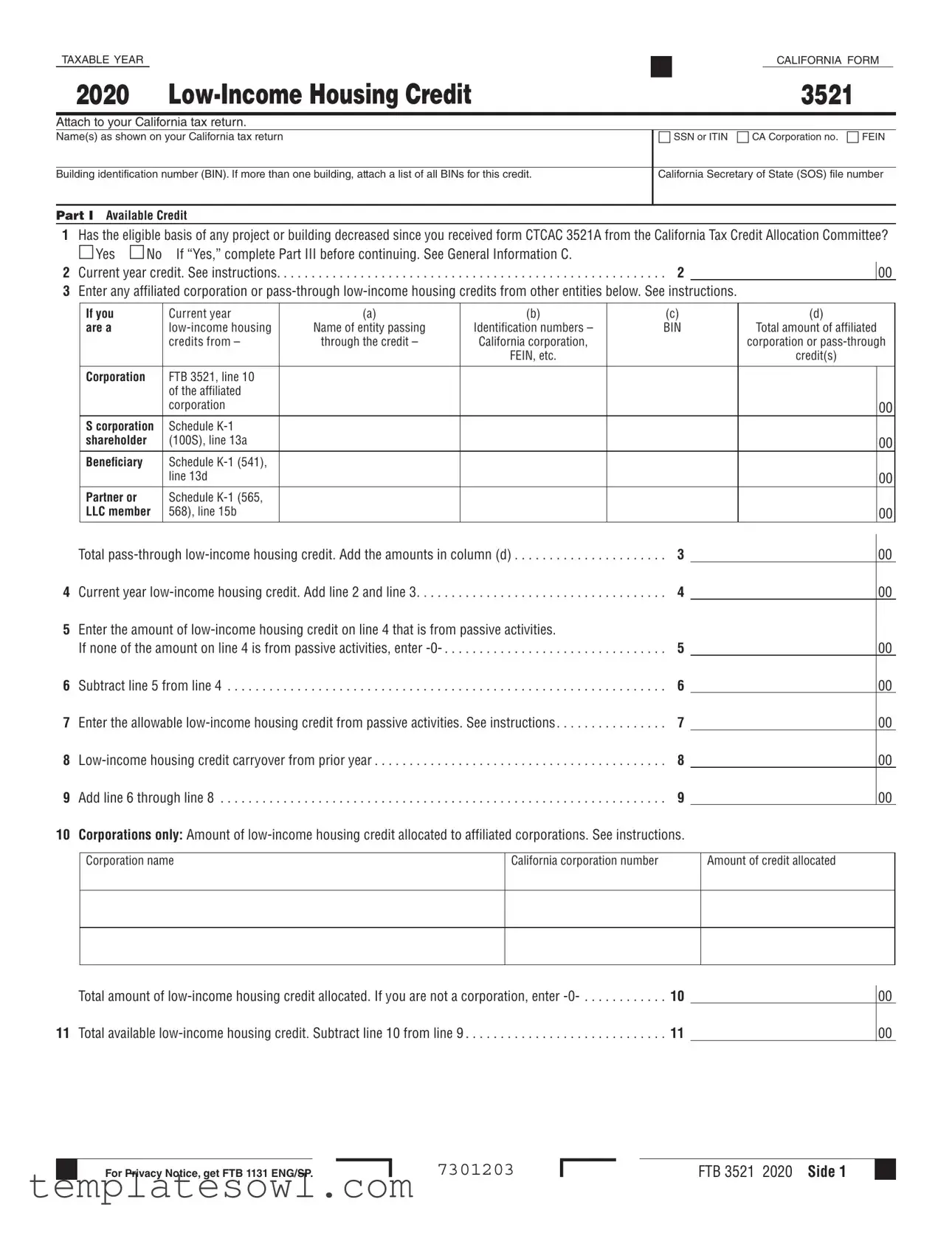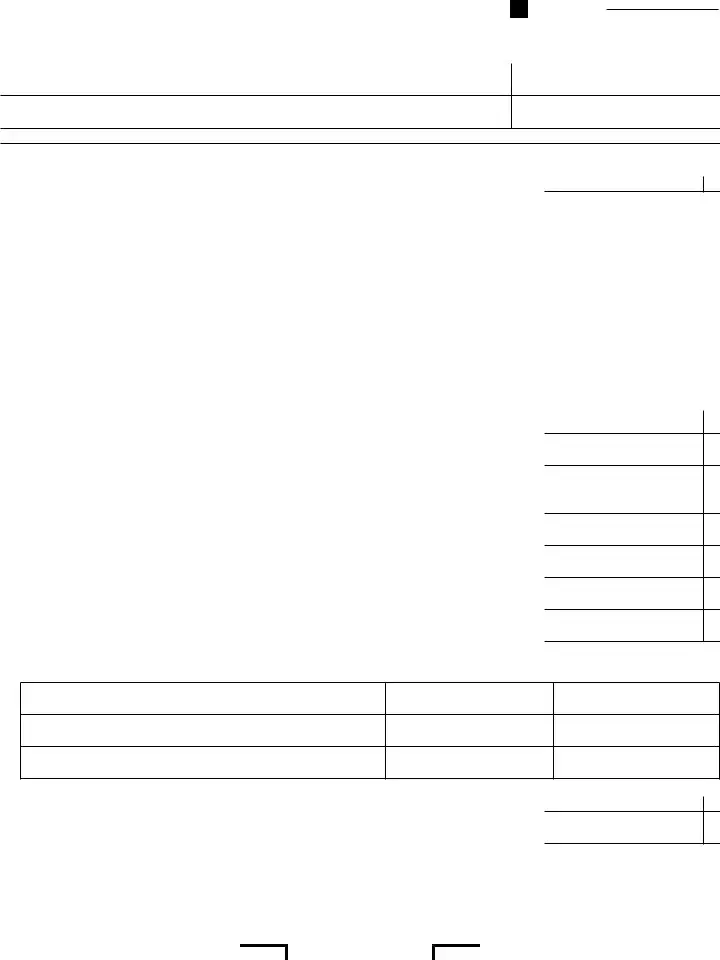What is California Form 3521?
California Form 3521 is the Low-Income Housing Credit form used by taxpayers who are eligible for tax credits related to affordable housing projects. This form must be attached to a California tax return and provides a mechanism for reporting various aspects of the low-income housing credit claimed for the tax year.
Who needs to file Form 3521?
Any taxpayer who has claimed a low-income housing credit in the state of California must file Form 3521. This includes individuals, corporations, and partnerships that own or invest in qualifying low-income housing projects. It ensures proper reporting and allocation of credits received during the taxable year.
What information is required on Form 3521?
The form requires a variety of information including your name or business name, Social Security Number (SSN) or Employer Identification Number (EIN), and a unique Building Identification Number (BIN) for each project. Additionally, it involves calculations regarding the eligible basis and the current year credits, including any credits carried over from previous years.
How do I determine the current year low-income housing credit?
To find the current year low-income housing credit, combine the amounts reported on line 2 and line 3 of the form. Line 2 reflects the current year credit, while line 3 involves any affiliated credits from other entities. Subtract any passive activity amounts to arrive at a precise total for the current year credit.
What should I do if my project's eligible basis has decreased?
If the eligible basis of your project or building has decreased since receiving Form CTCAC 3521A, complete Part III of Form 3521. This part will require a recalculation of credits based on the new lower basis, ensuring correct reporting and compliance with California tax regulations.
Can I carry over unused credits to future years?
Yes, any unused credits can often be carried over to future years. In Part II of Form 3521, you will enter the credit claimed for the current year and any total credits assigned. The form will help you calculate the amount available for carryover, which can be used to offset future tax liabilities.
Where do I submit Form 3521?
Form 3521 must be attached to your California state tax return, which is typically submitted to the Franchise Tax Board. Ensure that you keep copies of all related documentation for your records in case of future audits or inquiries.


